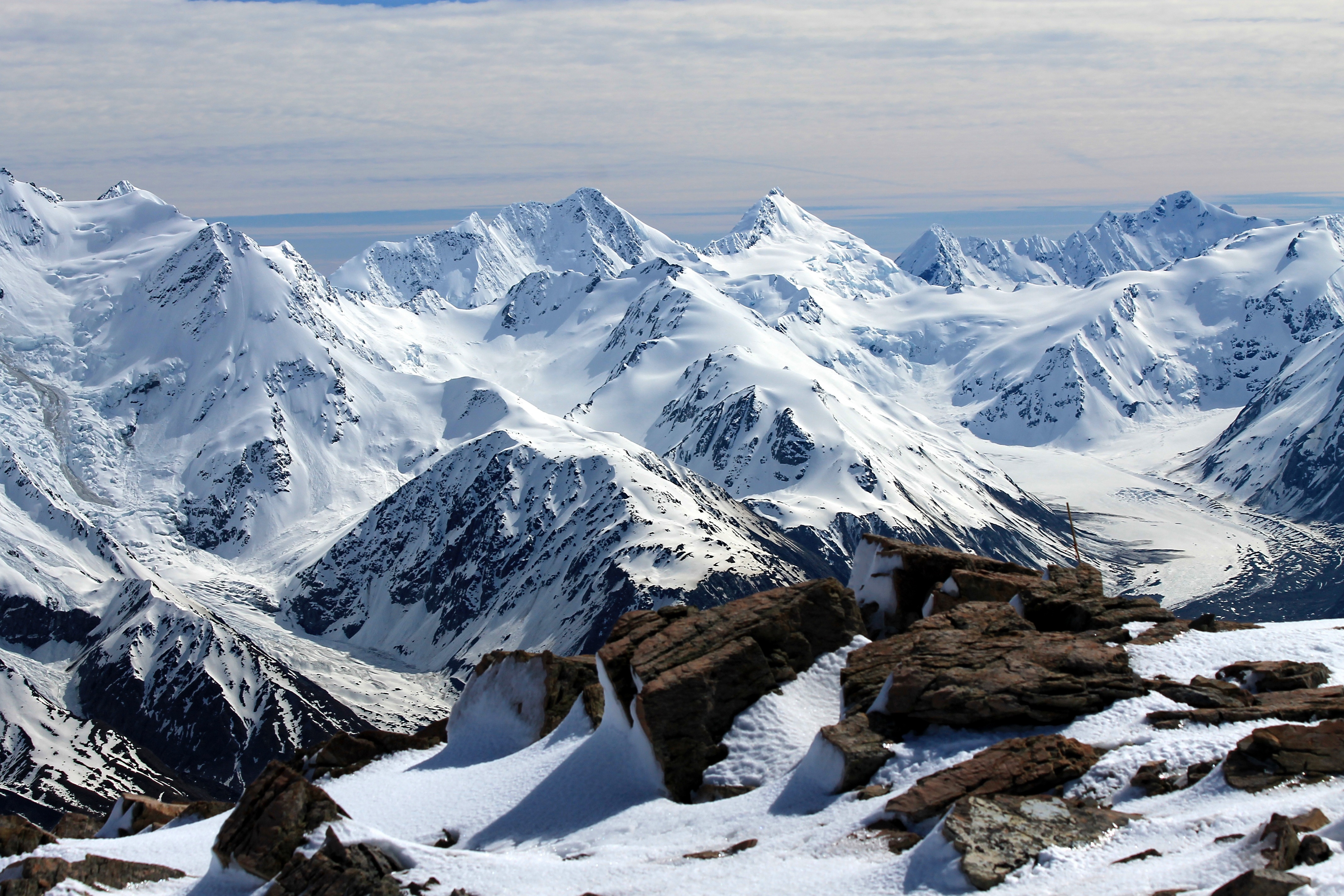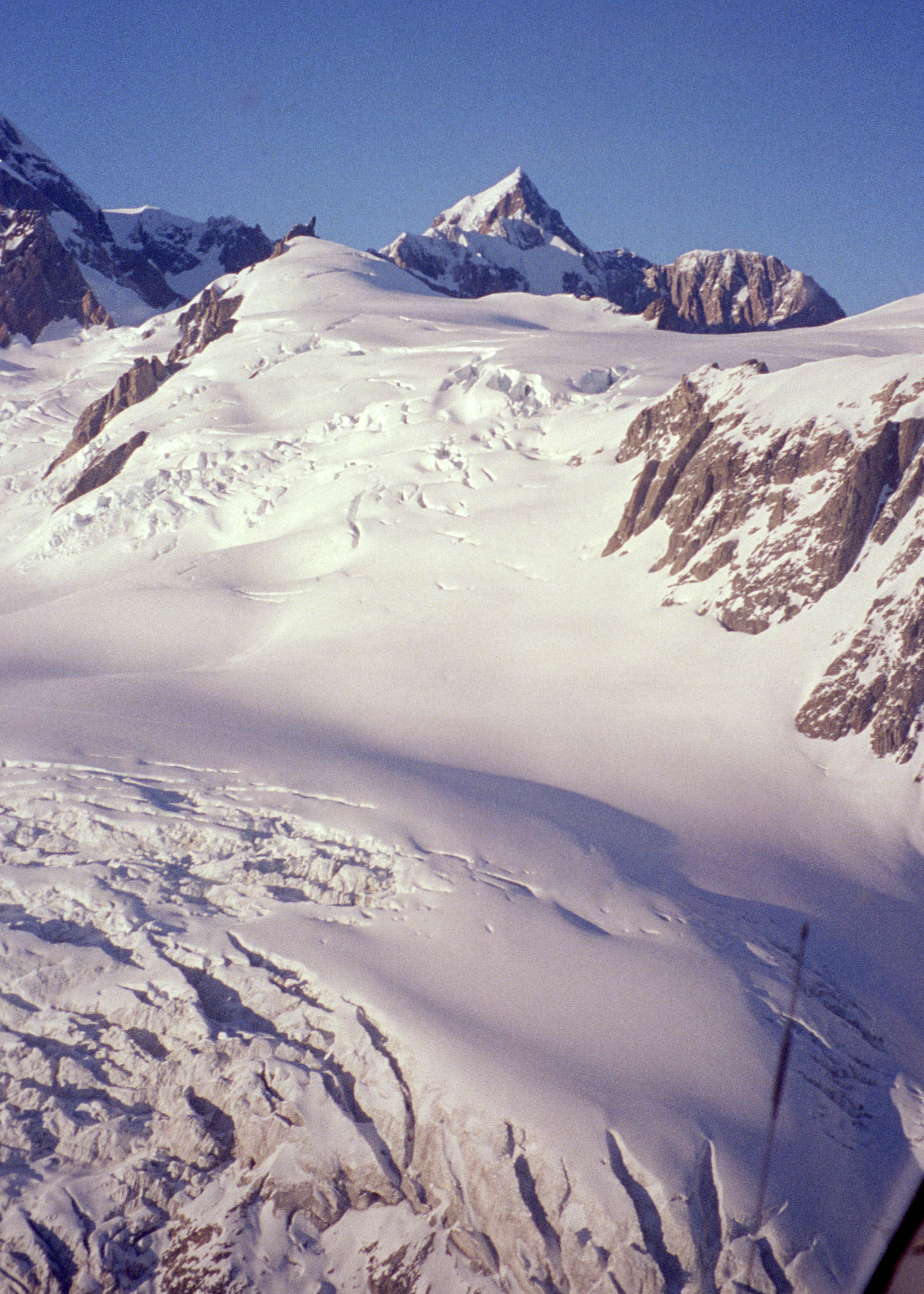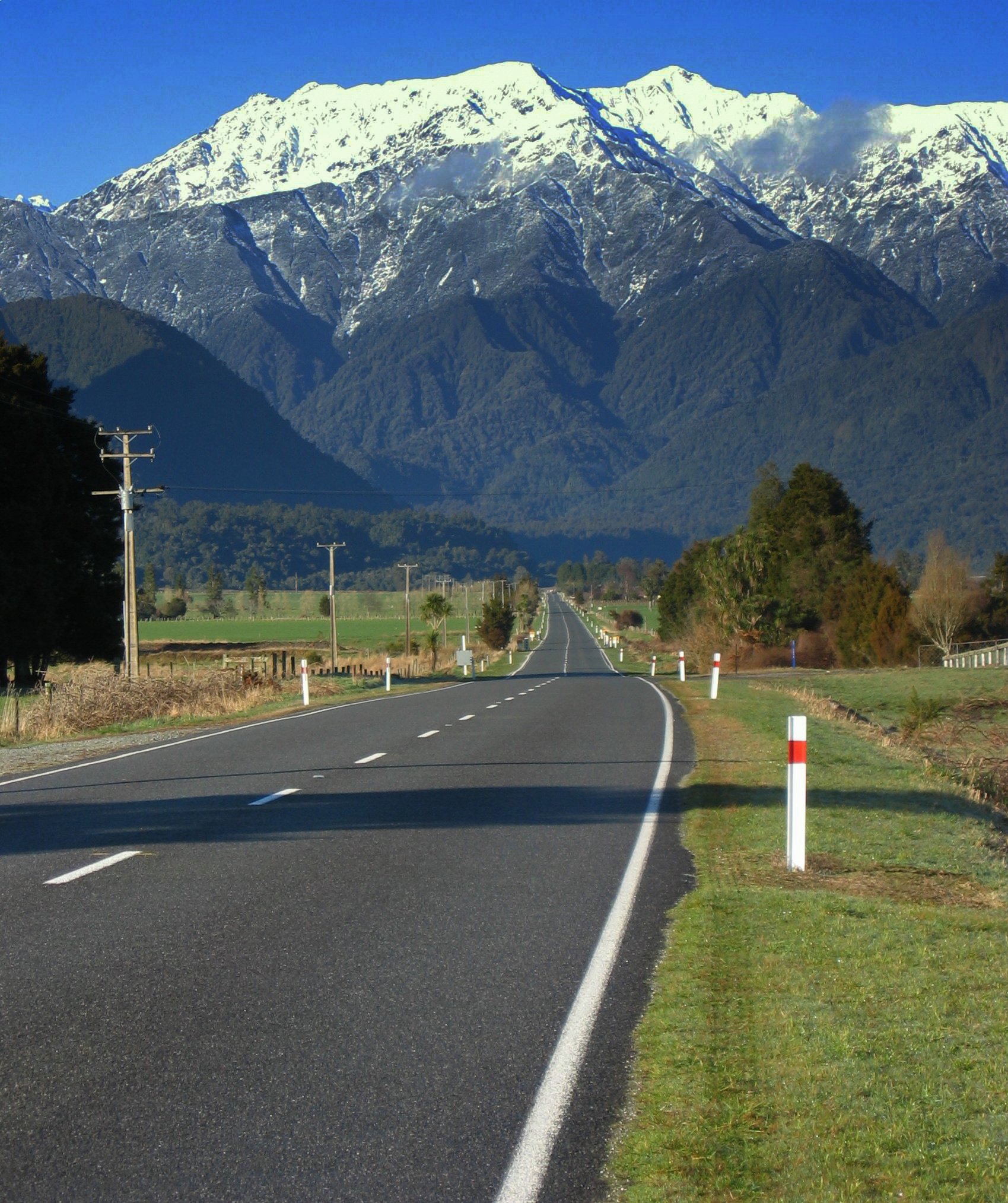|
Mount Vancouver (New Zealand)
Mount Vancouver is a peak in the Southern Alps. At 3,309 metres (10,856 feet) it is New Zealand's fourth highest named summit. It is an elevation on the ridge leading north from Aoraki / Mount Cook (3,724 m), between Mount Dampier (3,440 m) and the Clarke Saddle (2,978 m). The peak is named after Captain George Vancouver, who was part of the second voyage of James Cook in 1773 and who returned in 1791 as commander of the Vancouver Expedition. The New Zealand Geographic Board adopted the name Mount Vancouver in November 1953. See also * List of mountains of New Zealand by height The following are lists of mountains in New Zealand ordered by height. Names, heights, topographic prominence and isolation, and coordinates were extracted from the official Land Information New Zealand (LINZ) Topo50 topographic maps at thin ... References Southern Alps Westland District Mountains of Canterbury, New Zealand Mountains of the West Coast, New Zealand {{CanterburyN ... [...More Info...] [...Related Items...] OR: [Wikipedia] [Google] [Baidu] |
South Island
The South Island, also officially named , is the larger of the two major islands of New Zealand in surface area, the other being the smaller but more populous North Island. It is bordered to the north by Cook Strait, to the west by the Tasman Sea, and to the south and east by the Pacific Ocean. The South Island covers , making it the world's 12th-largest island. At low altitude, it has an oceanic climate. The South Island is shaped by the Southern Alps which run along it from north to south. They include New Zealand's highest peak, Aoraki / Mount Cook at . The high Kaikōura Ranges lie to the northeast. The east side of the island is home to the Canterbury Plains while the West Coast is famous for its rough coastlines such as Fiordland, a very high proportion of native bush and national parks, and the Fox and Franz Josef Glaciers. The main centres are Christchurch and Dunedin. The economy relies on agriculture and fishing, tourism, and general manufacturing and services. ... [...More Info...] [...Related Items...] OR: [Wikipedia] [Google] [Baidu] |
Southern Alps (New Zealand)
The Southern Alps (; officially Southern Alps / Kā Tiritiri o te Moana) is a mountain range extending along much of the length of New Zealand's South Island, reaching its greatest elevations near the range's western side. The name "Southern Alps" generally refers to the entire range, although separate names are given to many of the smaller ranges that form part of it. The range includes the South Island's Main Divide, which separates the water catchments of the more heavily populated eastern side of the island from those on the west coast. Politically, the Main Divide forms the boundary between the Marlborough, Canterbury and Otago regions to the southeast and the Tasman and West Coast regions to the northwest. Names The Māori name of the range is , meaning "the Mirage of the Ocean". The English explorer James Cook bestowed the name ''Southern Alps'' on 23 March 1770, admiring their "prodigious height". p. 384. They had previously been noted by Abel Tasman in 1642, whose ... [...More Info...] [...Related Items...] OR: [Wikipedia] [Google] [Baidu] |
New Zealand
New Zealand ( mi, Aotearoa ) is an island country in the southwestern Pacific Ocean. It consists of two main landmasses—the North Island () and the South Island ()—and over 700 smaller islands. It is the sixth-largest island country by area, covering . New Zealand is about east of Australia across the Tasman Sea and south of the islands of New Caledonia, Fiji, and Tonga. The country's varied topography and sharp mountain peaks, including the Southern Alps, owe much to tectonic uplift and volcanic eruptions. New Zealand's capital city is Wellington, and its most populous city is Auckland. The islands of New Zealand were the last large habitable land to be settled by humans. Between about 1280 and 1350, Polynesians began to settle in the islands and then developed a distinctive Māori culture. In 1642, the Dutch explorer Abel Tasman became the first European to sight and record New Zealand. In 1840, representatives of the United Kingdom and Māori chiefs ... [...More Info...] [...Related Items...] OR: [Wikipedia] [Google] [Baidu] |
Aoraki / Mount Cook
Aoraki / Mount Cook is the highest mountain in New Zealand. Its height, as of 2014, is listed as . It sits in the Southern Alps, the mountain range that runs the length of the South Island. A popular tourist destination, it is also a favourite challenge for mountain climbers. Aoraki / Mount Cook consists of three summits: from south to north, the Low Peak (), the Middle Peak () and the High Peak. The summits lie slightly south and east of the main divide of the Southern Alps / Kā Tiritiri o te Moana, with the Tasman Glacier to the east and the Hooker Glacier to the southwest. Location The mountain is in the Aoraki / Mount Cook National Park, in the Canterbury Region. The park was established in 1953 and along with Westland National Park, Mount Aspiring National Park and Fiordland National Park forms one of the UNESCO World Heritage Sites. The park contains more than 140 peaks standing over and 72 named glaciers, which cover 40 percent of its . The peak is located at the n ... [...More Info...] [...Related Items...] OR: [Wikipedia] [Google] [Baidu] |
Mount Dampier
Mount Dampier (''Rangiroa'' in Māori) is New Zealand's third highest mountain, rising to . It is located in the Southern Alps, between Mount Hicks and Aoraki / Mount Cook. It is often traversed by climbers en route to the North ridge of Mount Cook. Its Māori name literally means 'long sky' (rangi: sky; roa: long). The English name was originally Mount Hector, after James Hector, but in Fitzgerald's map of 1896 the peak had been renamed after William Dampier. See also * List of mountains of New Zealand by height The following are lists of mountains in New Zealand ordered by height. Names, heights, topographic prominence and isolation, and coordinates were extracted from the official Land Information New Zealand (LINZ) Topo50 topographic maps at thin ... References Southern Alps Westland District Mountains of Canterbury, New Zealand Damp {{CanterburyNZ-geo-stub ... [...More Info...] [...Related Items...] OR: [Wikipedia] [Google] [Baidu] |
George Vancouver
Captain George Vancouver (22 June 1757 – 10 May 1798) was a British Royal Navy officer best known for his 1791–1795 expedition, which explored and charted North America's northwestern Pacific Coast regions, including the coasts of what are now the Canadian province of British Columbia as well as the US states of Alaska, Washington and Oregon. He also explored the Hawaiian Islands and the southwest coast of Australia. Vancouver Island, the city of Vancouver in British Columbia, Vancouver, Washington in the United States, Mount Vancouver on the Canadian–US border between Yukon and Alaska, and New Zealand's fourth-highest mountain, also Mount Vancouver, are all named after him. Early life George Vancouver was born in the seaport town of King's Lynn (Norfolk, England) on 22 June 1757 - the sixth and youngest child of John Jasper Vancouver, a Dutch-born deputy collector of customs, and Bridget Berners. He came from an old respected family. The surname Vancouver comes ... [...More Info...] [...Related Items...] OR: [Wikipedia] [Google] [Baidu] |
Second Voyage Of James Cook
The second voyage of James Cook, from 1772 to 1775, commissioned by the British government with advice from the Royal Society, was designed to circumnavigate the globe as far south as possible to finally determine whether there was any great southern landmass, or Terra Australis. On his first voyage, Cook had demonstrated by circumnavigating New Zealand that it was not attached to a larger landmass to the south, and he charted almost the entire eastern coastline of Australia, yet Terra Australis was believed to lie further south. Alexander Dalrymple and others of the Royal Society still believed that this massive southern continent should exist. After a delay brought about by the botanist Joseph Banks' unreasonable demands, the ships ''Resolution'' and ''Adventure'' were fitted for the voyage and set sail for the Antarctic in July 1772. On 17 January 1773, ''Resolution'' was the first ship to venture south of the Antarctic Circle, which she did twice more on this voyage. The fin ... [...More Info...] [...Related Items...] OR: [Wikipedia] [Google] [Baidu] |
Vancouver Expedition
The Vancouver Expedition (1791–1795) was a four-and-a-half-year voyage of exploration and diplomacy, commanded by Captain George Vancouver of the Royal Navy. The British expedition circumnavigated the globe and made contact with five continents. The expedition at various times included between two and four vessels, and up to 153 men, all but 6 of whom returned home safely. Origin Several previous voyages of exploration including those of Ferdinand Magellan and James Cook, and the Spanish Manila-Acapulco galleons trade route active since 1565, had established the strategic and commercial value of exploring and claiming the Pacific Ocean access, both for its wealth in whales and furs and as a trade route to the "Orient". Britain was especially interested in improving its knowledge of the Southern Pacific whale fisheries, and in particular the location of the strategically positioned Australia, New Zealand, the legendary ''Isla Grande'', and the Northwest Passage. A new ship was ... [...More Info...] [...Related Items...] OR: [Wikipedia] [Google] [Baidu] |
List Of Mountains Of New Zealand By Height
The following are lists of mountains in New Zealand ordered by height. Names, heights, topographic prominence and isolation, and coordinates were extracted from the official Land Information New Zealand (LINZ) Topo50 topographic maps at thinteractive topographic map of New Zealandsite. Mountains are referred to as ''maunga'' in the Māori language. Named summits over 2,900 m All summits over are within the Southern Alps, a chain that forms the backbone of the South Island, and all but one ( Mount Aspiring) are within a radius of Aoraki / Mount Cook. Some of these summits are mere shoulders on the ridges of Aoraki and Mount Tasman. The 100 highest mountains These are all the mountains over with a topographic prominence (drop) of at least , closely matching those on thlist of mountains of New Zealandby the New Zealand Alpine Club. Five peaks overlooked on that list are indicated with an asterisk. Of these 100 mountains, all but two — Ruapehu (Tahurangi Peak) (19th hi ... [...More Info...] [...Related Items...] OR: [Wikipedia] [Google] [Baidu] |
Southern Alps
The Southern Alps (; officially Southern Alps / Kā Tiritiri o te Moana) is a mountain range extending along much of the length of New Zealand's South Island, reaching its greatest elevations near the range's western side. The name "Southern Alps" generally refers to the entire range, although separate names are given to many of the smaller ranges that form part of it. The range includes the South Island's Main Divide, which separates the water catchments of the more heavily populated eastern side of the island from those on the west coast. Politically, the Main Divide forms the boundary between the Marlborough, Canterbury and Otago regions to the southeast and the Tasman and West Coast regions to the northwest. Names The Māori name of the range is , meaning "the Mirage of the Ocean". The English explorer James Cook bestowed the name ''Southern Alps'' on 23 March 1770, admiring their "prodigious height". p. 384. They had previously been noted by Abel Tasman in 1642, whose ... [...More Info...] [...Related Items...] OR: [Wikipedia] [Google] [Baidu] |
Westland District
Westland District is a Districts of New Zealand, territorial authority district on the West Coast, New Zealand, West Coast of New Zealand's South Island. It is administered by the Westland District Council. The district's population is History Westland was originally a part of Canterbury Province, administered from Christchurch in the East coast. The booming population as a result of the gold rush, together with the difficulty of travel and communication across the Southern Alps, led first to the creation of a special Westland County, then the formal separation of Westland from Canterbury to form the short-lived Westland Province (1873–1876). Westland Province also included what is now the southern portion of Grey District with the provincial boundary at the Grey River (New Zealand), Grey and Arnold River (New Zealand), Arnold rivers. Greymouth proper was in Westland Province, Cobden, New Zealand, Cobden, on the north bank of the Grey River, was in Nelson Province . After the ... [...More Info...] [...Related Items...] OR: [Wikipedia] [Google] [Baidu] |
Mountains Of Canterbury, New Zealand
A mountain is an elevated portion of the Earth's crust, generally with steep sides that show significant exposed bedrock. Although definitions vary, a mountain may differ from a plateau in having a limited summit area, and is usually higher than a hill, typically rising at least 300 metres (1,000 feet) above the surrounding land. A few mountains are isolated summits, but most occur in mountain ranges. Mountains are formed through tectonic forces, erosion, or volcanism, which act on time scales of up to tens of millions of years. Once mountain building ceases, mountains are slowly leveled through the action of weathering, through slumping and other forms of mass wasting, as well as through erosion by rivers and glaciers. High elevations on mountains produce colder climates than at sea level at similar latitude. These colder climates strongly affect the ecosystems of mountains: different elevations have different plants and animals. Because of the less hospitable terrain and ... [...More Info...] [...Related Items...] OR: [Wikipedia] [Google] [Baidu] |






